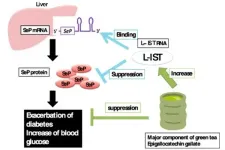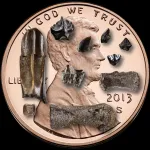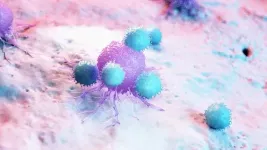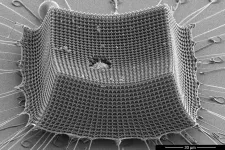South Korean team to develop nanofilm-based "cell cage" technology
2021-06-24
(Press-News.org) A research team, led by Prof. Nathaniel S. Hwang and Prof. Byung-gee Kim, from Seoul National University (SNU) and Prof. Dong Yun Lee, from Hanyang University, has used enzymatic crosslinking to create nanofilms on cell surfaces. SNU has announced that it has developed a "cell caging" technology for the applications in cell-based therapies. The "cell caging" technique can prevent immune rejection during heterologous islet cell transplantation, facilitate smooth cell insulin secretion, and treat type 1 diabetic patients without immunosuppressants.
The research team succeeded in producing a nanofilm by using the electrostatic force to stack chitosan, which is a biological polymer, and hyaluronic acid in that order. To overcome the shortcomings of the existing nanofilm lamination method, which has low durability, the joint research team produced a stronger and more durable film with crosslinking technology through S.av. tyrosinase, an enzyme newly developed by the joint research team. The newly developed tyrosinase has a much faster cross-linking rate than conventional enzymes, and can be used in clinical practice.
In the past, alginate was popularly investigated as transplantable materials for cell encapsulation to treat type 1 diabetes. However, the thick thickness of the capsule limits the blood glucose recognition and insulin secretion. In addition, alginate-based encapsulation system has a risk of fibrosis capsule formation. The "cell caging" technology developed by the research team is capable of immediate blood glucose recognition, blood glucose recognition and insulin secretion due to its ultra-thin thickness (roughly ~150 nanometers). The research team applied the caging technology to MIN6 cells, which are islet cells of mice, and transplanted them into the type 1 diabetes induced mouse, and succeeded in regulating blood glucose levels. In addition, the nanomembrane technology can be applied to both single cells and cell spheroids, and is expected to be applicable to heterologous organ transplantation and treatment of diseases using stem cells.
Professor Nathaniel S. Hwang noted, "Using the 'cell cage' technology developed in this study, it is expected that the immune rejection reaction, the biggest problem in the treatment of type 1 diabetes through beta-cell transplantation, will be overcome. The goal is to accelerate the commercialization of 'cell cage' technology through clinical development."
INFORMATION:
The results of this study were published online on June 23 in Science Advances. (Title: Novel Enzymatic Crosslinking-based Hydrogel Nanofilm Caging System on Pancreatic β-cell Spheroid for Long-term Blood Glucose Regulation)
[Attachments] See images for this press release:
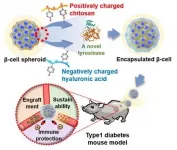
ELSE PRESS RELEASES FROM THIS DATE:
2021-06-24
Across the world, type 2 diabetes is on the rise. A research group has discovered a new gene that may hold the key to preventing and treating lifestyle related diseases such as type 2 diabetes.
The results of their research were published in the journal Nucleic Acids Research on June 18, 2021.
Selenoprotein P (SeP) is an essential plasma protein containing the micronutrient selenium. However, too much SeP spells trouble.
Excess SeP increases insulin resistance, thus weakening the effect of insulin, and worsening the metabolism of glucose.
"Excess SeP is the enemy when it comes to type 2 diabetes," stressed professor Yoshiro Saito from the Graduate School of Pharmaceutical Sciences at Tohoku University and co-author of the ...
2021-06-24
Female elephant seal weigh on average 350 kg, and dive continuously to the ocean's mesopelagic zone, about 200 to 1,000 meters deep, to consume their only prey: small fish that weigh less than 10 grams. Now, an international team of researchers, armed with eight years of data, may have answered a decades-long question: How do seals maintain their large size on such small prey?
They published their answer on May 12 in Science Advances.
"It is not easy to get fat," said paper author Taiki Adachi, research fellow with the National Institute of Polar Research and the School of Biology, University of St Andrews. "Elephant seals have to spend almost ...
2021-06-24
Genome study reveals East Asian coronavirus epidemic 20,000 years ago
An international study has discovered a coronavirus epidemic broke out in the East Asia region more than 20,000 years ago, with traces of the outbreak evident in the genetic makeup of people from that area.
Professor Kirill Alexandrov from CSIRO-QUT Synthetic Biology Alliance and QUT's Centre for Genomics and Personalised Health, is part of a team of researchers from the University of Arizona, the University of California San Francisco, and the University of Adelaide who have published their findings in the journal Current Biology.
In the past 20 years, there have been three outbreaks of epidemic severe coronaviruses: ...
2021-06-24
In the 1950s, researchers made the first unexpected discoveries of dinosaur remains at frigid polar latitudes. Now, researchers reporting in the journal Current Biology on June 24 have uncovered the first convincing evidence that several species of dinosaur not only lived in what's now Northern Alaska, but they also nested there.
"These represent the northernmost dinosaurs known to have existed," says Patrick Druckenmiller of the University of Alaska Museum of the North. "We didn't just demonstrate the presence of perinatal remains--in the egg or just hatched--of one or two species, rather we documented at ...
2021-06-24
Images of dinosaurs as cold-blooded creatures needing tropical temperatures could be a relic of the past.
University of Alaska Fairbanks and Florida State University scientists have found that nearly all types of Arctic dinosaurs, from small bird-like animals to giant tyrannosaurs, reproduced in the region and likely remained there year-round.
Their findings are detailed in a new paper published in the journal Current Biology.
"It wasn't long ago that people were pretty shocked to find out that dinosaurs lived up in the Arctic 70 million years ago," said Pat Druckenmiller, the paper's lead author and director of the ...
2021-06-24
The 'anterior cingulate cortex' is key brain region involved in linking behaviours to their outcomes.
When this region was temporarily silenced, monkeys did not change behaviour even when it stopped having the expected outcome.
The finding is a step towards targeted treatment of human disorders involving compulsive behaviour, such as OCD and eating disorders, thought to involve impaired function in this brain region.
Researchers have discovered a specific brain region underlying 'goal-directed behaviour' - that is, when we consciously do something with a particular goal in mind, for example going to the shops to buy food.
The ...
2021-06-24
LA JOLLA, CA--New research led by scientists at La Jolla Institute for Immunology (LJI) and the University of Liverpool may explain why many cancer patients do not respond to anti-PD-1 cancer immunotherapies--also called checkpoint inhibitors.
The team reports that these patients may have tumors with high numbers of T follicular regulatory (Tfr) cells.
In a healthy person, Tfr cells do the important job of stopping haywire T cells and autoantibodies from attacking the body's own tissues. But in a cancer patient, Tfr cells dramatically dial back the body's ability to kill cancer cells.
Anti-PD-1 cancer immunotherapies boost the body's cancer-fighting T cells, but ...
2021-06-24
'Precision agriculture' where farmers respond in real time to changes in crop growth using nanotechnology and artificial intelligence (AI) could offer a practical solution to the challenges threatening global food security, a new study reveals.
Climate change, increasing populations, competing demands on land for production of biofuels and declining soil quality mean it is becoming increasingly difficult to feed the world's populations.
The United Nations (UN) estimates that 840 million people will be affected by hunger by 2030, but researchers have developed a roadmap combining smart and nano-enabled agriculture with AI and machine learning capabilities that could help to reduce this ...
2021-06-24
A new study by engineers at MIT, Caltech, and ETH Zürich shows that "nanoarchitected" materials -- materials designed from precisely patterned nanoscale structures -- may be a promising route to lightweight armor, protective coatings, blast shields, and other impact-resistant materials.
The researchers have fabricated an ultralight material made from nanometer-scale carbon struts that give the material toughness and mechanical robustness. The team tested the material's resilience by shooting it with microparticles at supersonic speeds, and found that the material, which is thinner than the width of a human hair, prevented the miniature projectiles from tearing through ...
2021-06-24
HAMILTON, ON June 24, 2021 -- The idea of visiting the doctor's office with symptoms of an illness and leaving with a scientifically confirmed diagnosis is much closer to reality because of new technology developed by researchers at McMaster University.
Engineering, biochemistry and medical researchers from across campus have combined their skills to create a hand-held rapid test for bacterial infections that can produce accurate, reliable results in less than an hour, eliminating the need to send samples to a lab.
Their proof-of-concept research, published today in the journal Nature Chemistry, specifically describes the test's ...
LAST 30 PRESS RELEASES:
[Press-News.org] South Korean team to develop nanofilm-based "cell cage" technology

